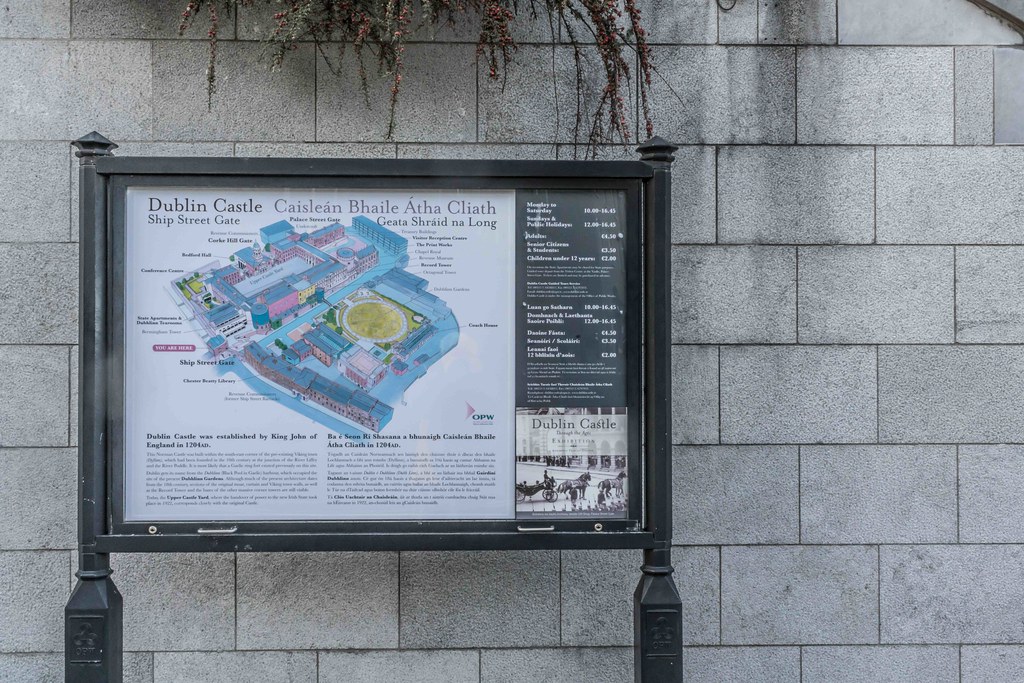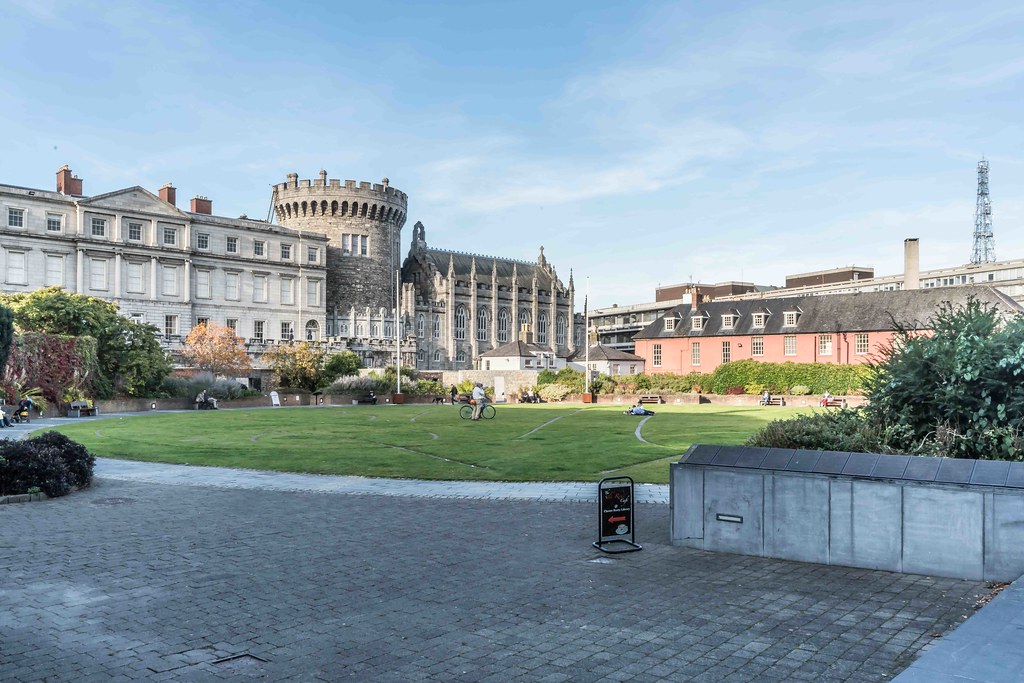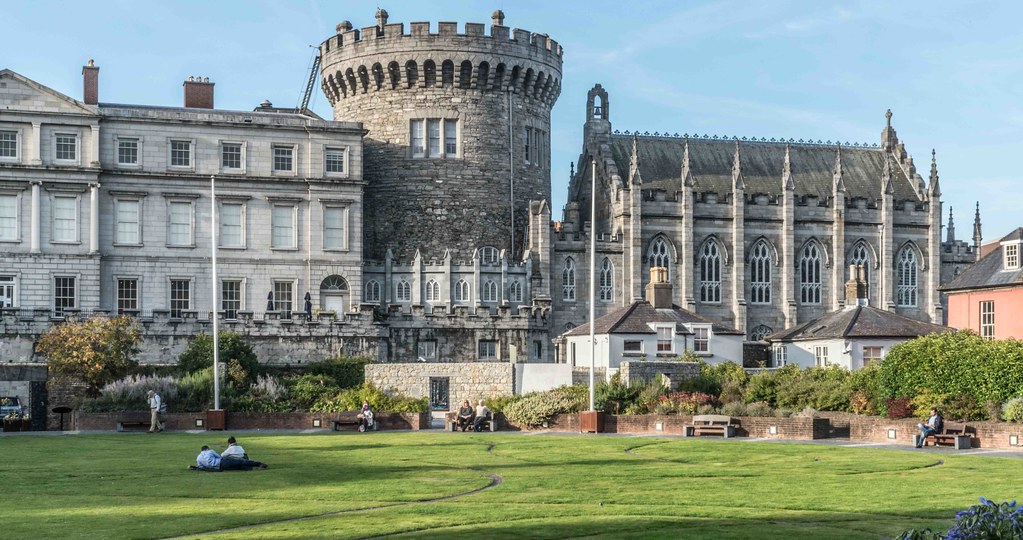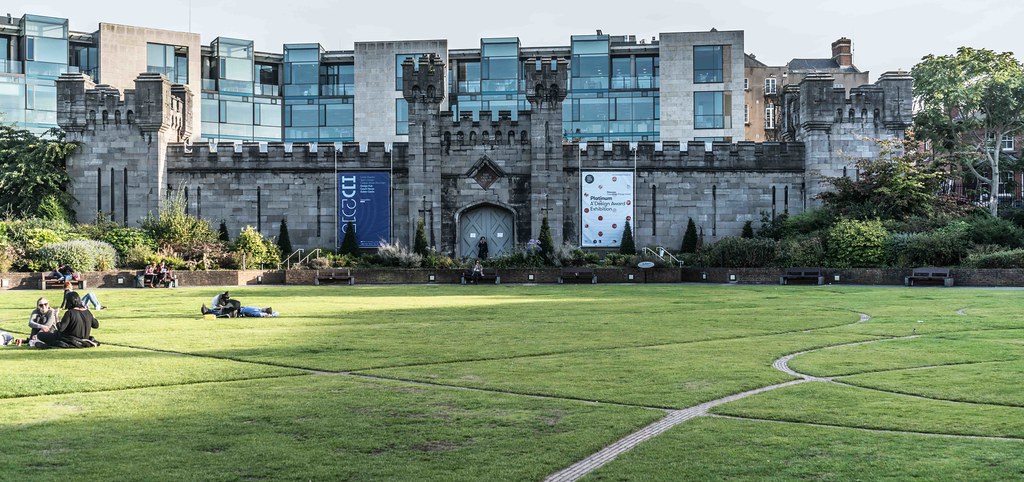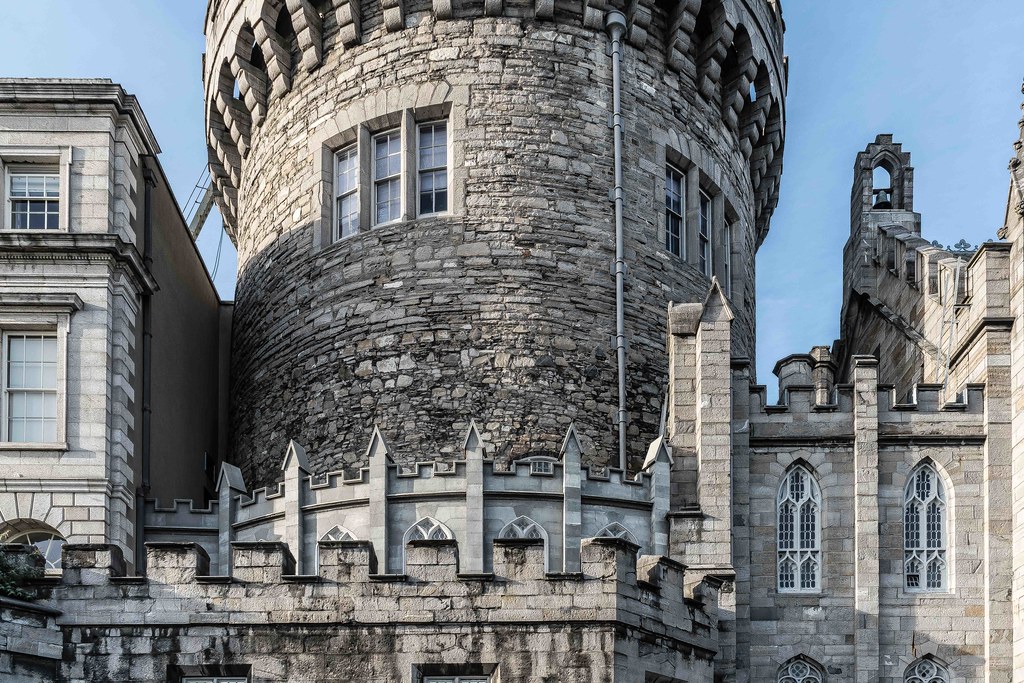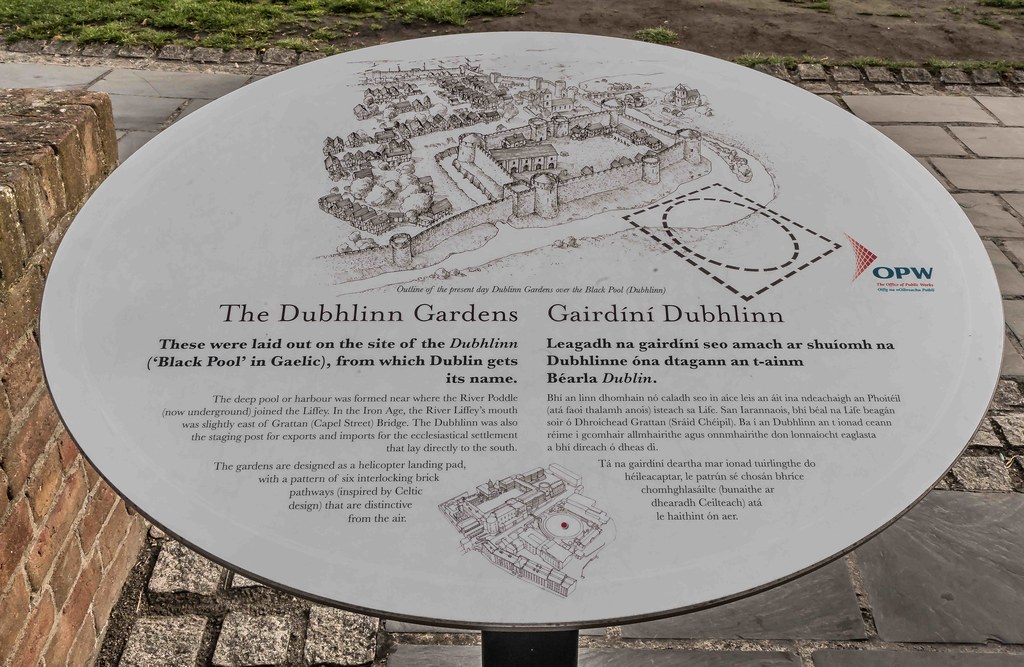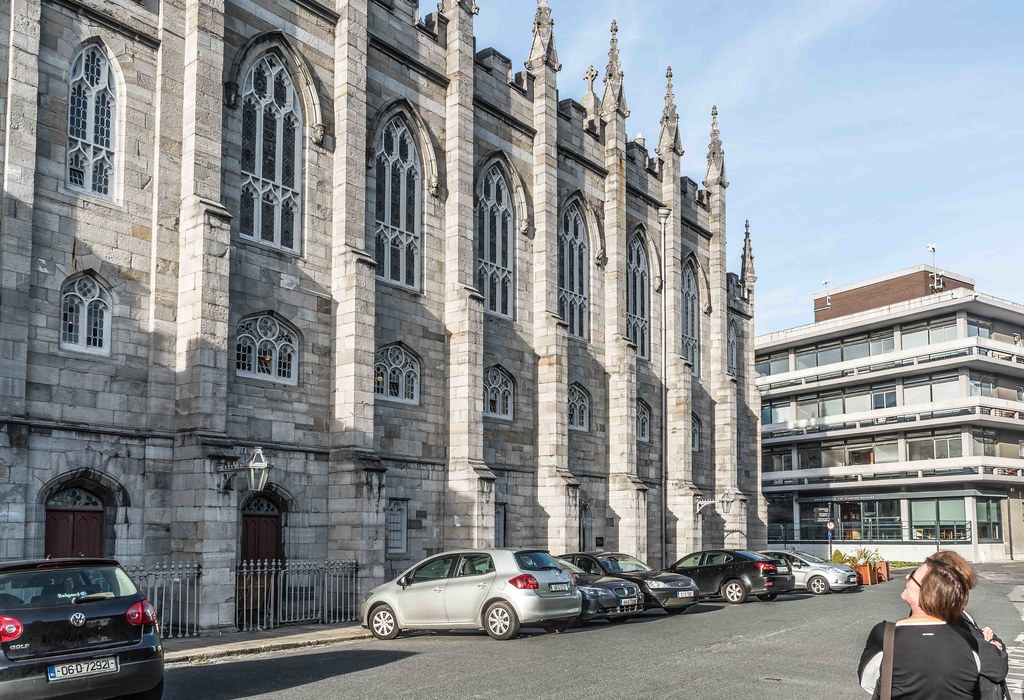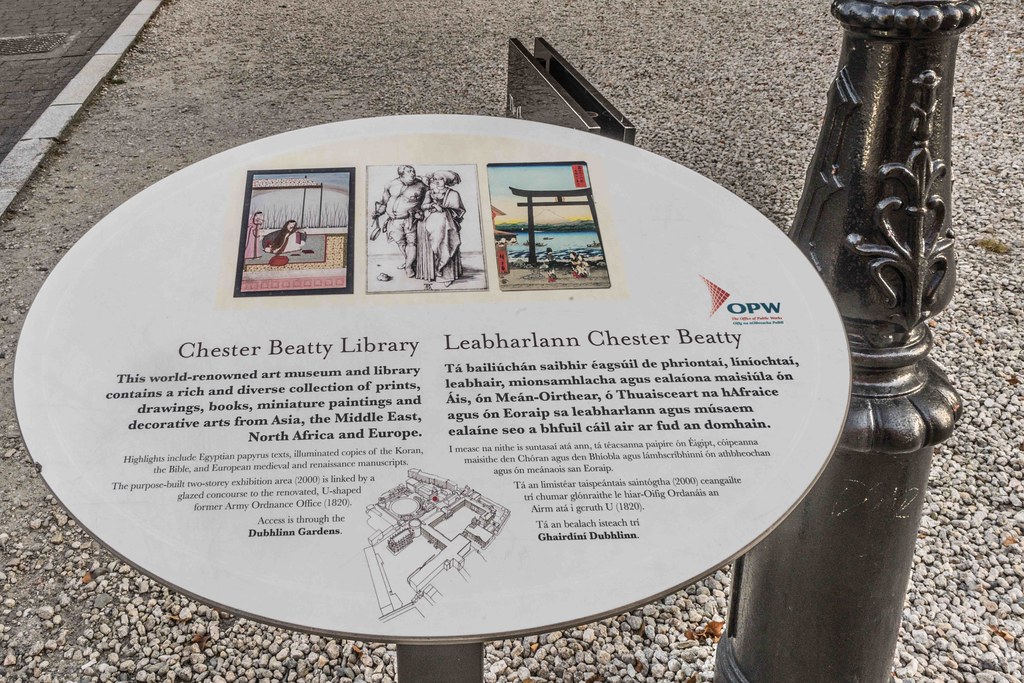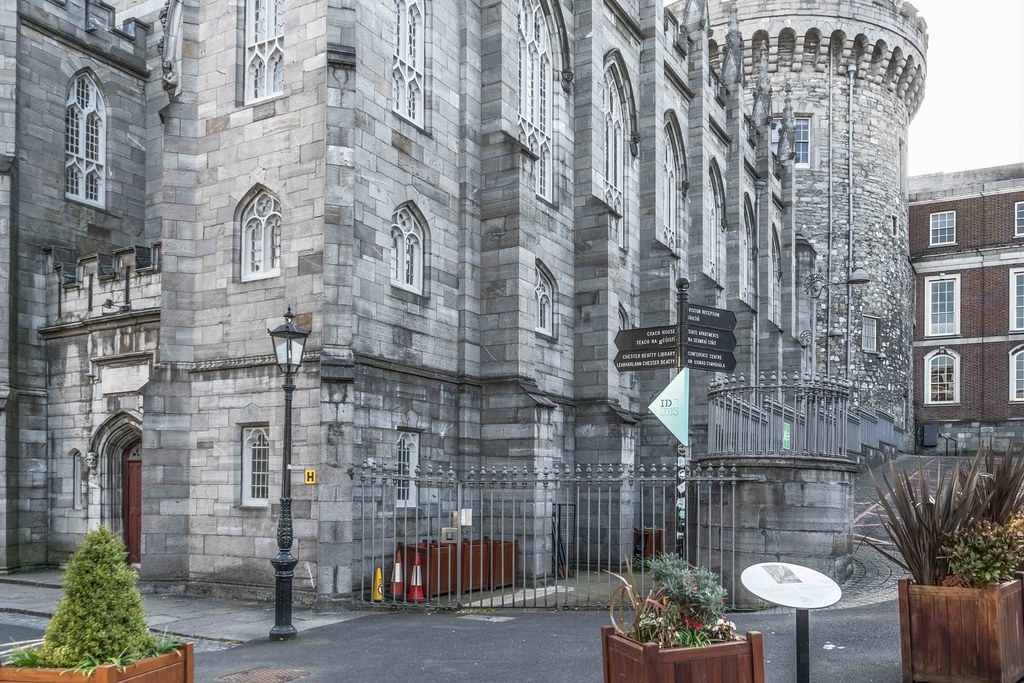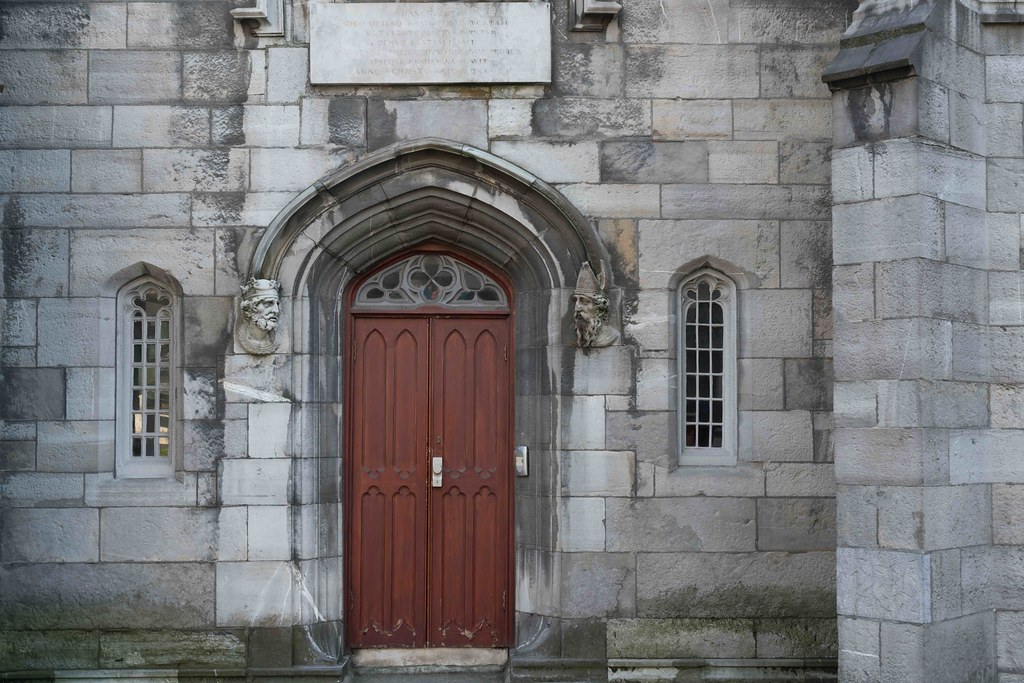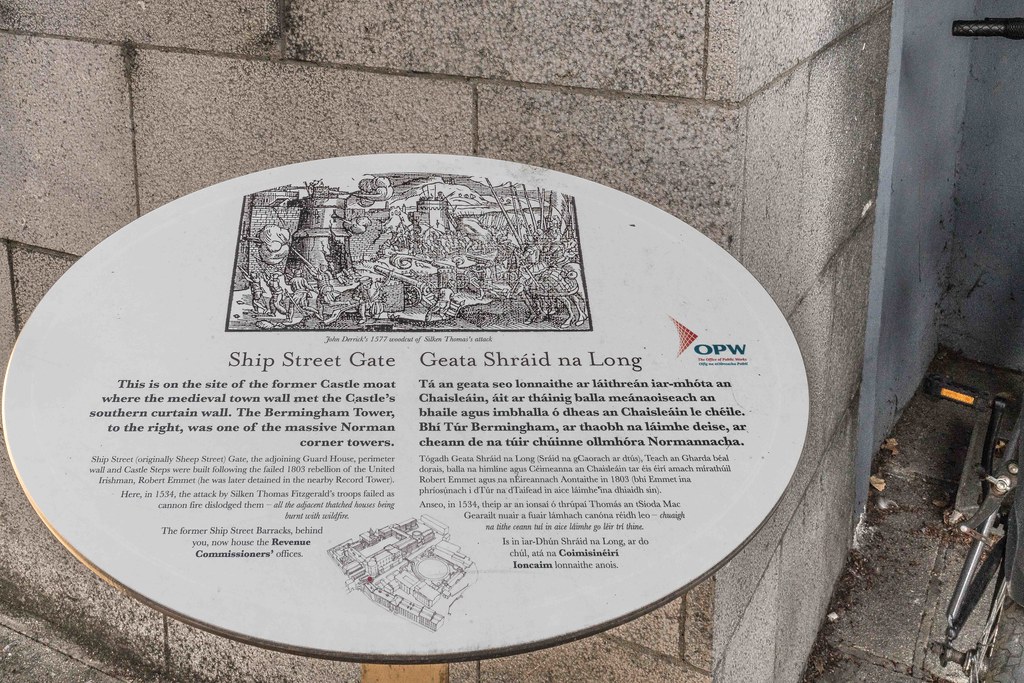
Custom Search
THE GREEN MENU OPTIONS ARE MOBILE FRIENDLY AND ARE FASTER SO THEY ARE RECOMMENDED. THE RED MENU OPTIONS ARE SOMEWHAT SLOWER DEPENDING ON YOUR DEVICE OR BROWSER AND ARE MORE SUITABLE FOR DESKTOPS AND LAPTOPS. THE BLUE OPTIONS ARE PAGE LINKS AND WILL BE PHASED OUT GOING FORWARD
DUBLIN CASTLE
DUBLIN CASTLE 2016
Many tourists become somewhat disappointed when the see Dublin Castle because it is not is as they may have imagined it ... John Cornforth described the Castle as "not even a work of architecture" but "a piece of English make-do and mend".
Dublin Castle was until 1922 the seat of the United Kingdom government's administration in Ireland, and is now a major Irish government complex. Most of it dates from the 18th century, though a castle has stood on the site since the days of King John, the first Lord of Ireland. The Castle served as the seat of English, then later British government of Ireland under the Lordship of Ireland (1171–1541), the Kingdom of Ireland (1541–1800), and the United Kingdom of Great Britain and Ireland (1800–1922).
After the signing of the Anglo-Irish Treaty in December 1921, the complex was ceremonially handed over to the newly formed Provisional Government led by Michael Collins.
Dublin Castle fulfilled a number of roles through its history. Originally built as a defensive fortification for the Norman city of Dublin, it later evolved into a royal residence, resided in by the Lord Lieutenant of Ireland or Viceroy of Ireland, the representative of the monarch. The second in command in the Dublin Castle administration, the Chief Secretary for Ireland, also had his offices there. Over the years parliament and law courts met at the castle before moving to new purpose-built venues. It also served as a military garrison. "Castle Catholic" was a pejorative term for Catholics who were considered to be overly friendly with or supportive of the British administration.
Upon formation of the Free State in 1922, the castle assumed for a decade the role of the Four Courts on the Liffey quays which had been badly damaged during the Civil War.
It was decided in 1938 that the inauguration of the first President of Ireland, Douglas Hyde would take place in the castle, and the complex has been host to this ceremony ever since. The castle is also used for hosting official State visits as well as more informal foreign affairs engagements, State banquets, and Government policy launches, as well as acting as the central base for Ireland's hosting of the European Presidency approximately every 10 years.
After the signing of the Anglo-Irish Treaty in December 1921, the complex was ceremonially handed over to the newly formed Provisional Government led by Michael Collins.
Dublin Castle fulfilled a number of roles through its history. Originally built as a defensive fortification for the Norman city of Dublin, it later evolved into a royal residence, resided in by the Lord Lieutenant of Ireland or Viceroy of Ireland, the representative of the monarch. The second in command in the Dublin Castle administration, the Chief Secretary for Ireland, also had his offices there. Over the years parliament and law courts met at the castle before moving to new purpose-built venues. It also served as a military garrison. "Castle Catholic" was a pejorative term for Catholics who were considered to be overly friendly with or supportive of the British administration.
Upon formation of the Free State in 1922, the castle assumed for a decade the role of the Four Courts on the Liffey quays which had been badly damaged during the Civil War.
It was decided in 1938 that the inauguration of the first President of Ireland, Douglas Hyde would take place in the castle, and the complex has been host to this ceremony ever since. The castle is also used for hosting official State visits as well as more informal foreign affairs engagements, State banquets, and Government policy launches, as well as acting as the central base for Ireland's hosting of the European Presidency approximately every 10 years.
LOADING
Commercial DisclosurePLEASE NOTE THAT LINKS BELOW MAY REDIRECT YOU TO THE AMAZON LOCATION MOST LIKELY TO SHIP TO YOUR ADDRESS
You will find links to buy products from Amazon, Google and other partners. If you click on these links, you’ll find that the URL includes a small extra piece of text which identifies that the click came from my websites. This text is an affiliate code, and it means that I get a small percentage of the money you spend if you choose to buy that product, or, in some cases, other products from the site soon after. These affiliate links help pay the costs of producing my websites and ensure that the content is free to you.




